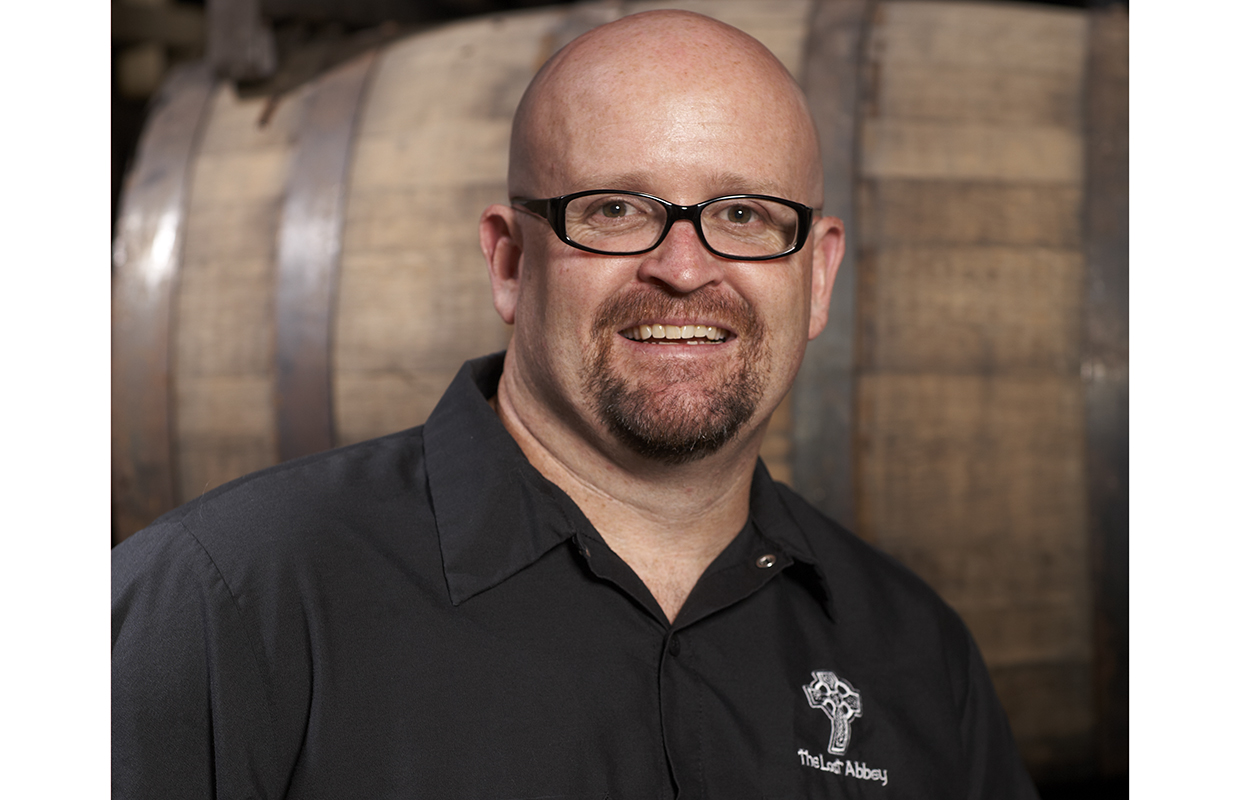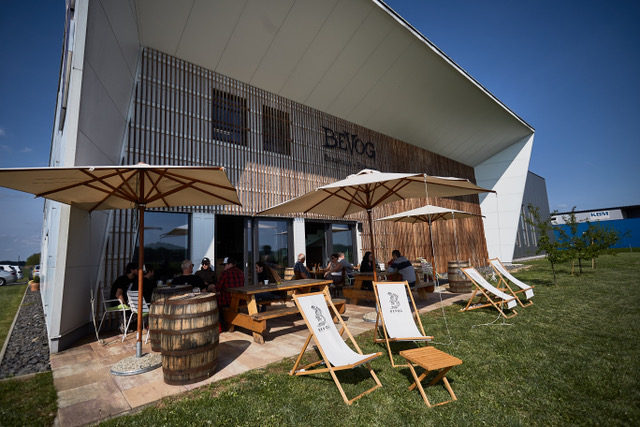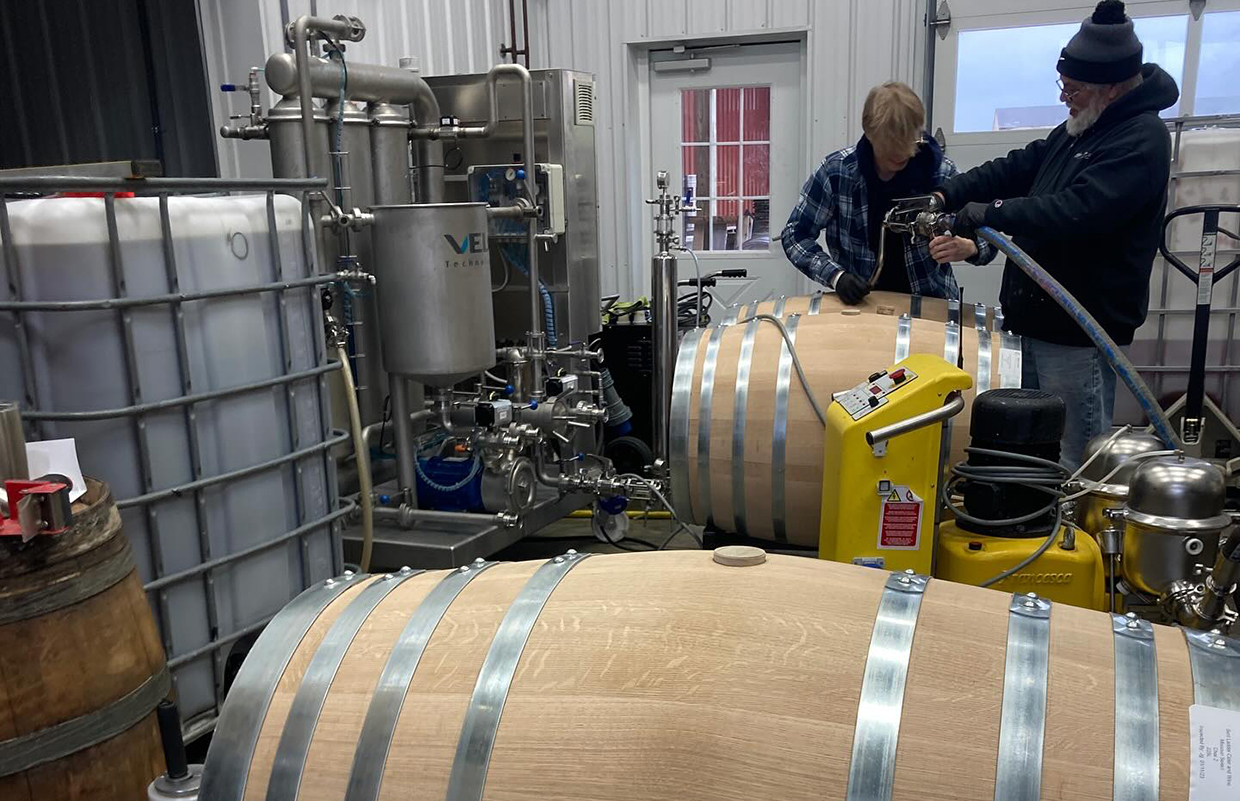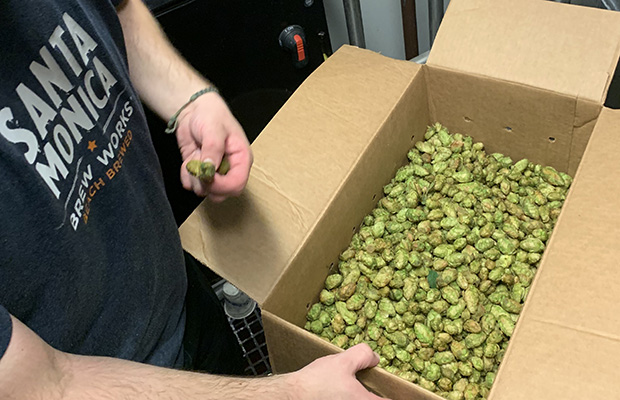
Alright, try to keep up. It started with Pizza Port Brewing in the ’90s. That was the launching pad for Port Brewing, which begat Lost Abbey … which begat The Hop Concept and now Tiny Bubbles.
No need to be afraid to throw in some Biblical influences to the discussion since Tomme Arthur relies heavily on the Good Book with the high-end Lost Abbey brand’s imagery.
Although many different names and many brands, the Port/Lost Abbey/THC and Bubbles lines all come from the same production facility in San Marcos, California. But all serve a distinct purpose in the market with its own identity and clients.
Arthur, who is the COO — that would be Chief Operating Owner — launched the Lost Abbey brand in 2006 after working almost a decade with Gina and Vince Marsaglia at Pizza Port. But Port/Lost Abbey is a company of its own and has been for more than a decade now with the core owners sharing beers and ideas weekly still.
“This business wasn’t built by Zooming and not sharing beer,” Arthur said. “So we make it a point to do so. And it’s been good through the pandemic. Person-to-person contact is how ownership typically works and on a small business level. And so it’s important, I think, to keep that part of it up.”
Those discussions can include the direction of the brands that are under the umbrella. That means West Coast styles at Port, high-end Belgian farmhouse and barrels with Lost Abbey, straight-forward IPAs with simple names at The Hop Concept while the newest line, Tiny Bubbles focuses strictly on a canned Gose-style brand.
“I think we’ve always felt that it was going to be easier to tell the stories and keep them separate,” Arthur said. “Channel-wise, we wanted the Abbey to be a super-premium brand.
“If you look at a lot of wineries, they might have a top tier, middle tier, bottom tier sort of scenario. The pricing is different, and the labeling is different. And it all just looks and feels different. I think from the get-go, we saw that there was room to have that be something. If we produced a lot of different beers under one brand, it felt like we would run out of naming conventions and stuff that would make sense. It has been, from Day 1, a very, very good decision on our part.”
It can be interesting on the consumer side since many don’t know the vast array of brands that come out of one building.
“A lot of Abbey people don’t drink IPAs or Port people don’t drink Abbey beers. So there’s clearly that [difference],” Arthur said. “We just had an Instagram post a couple days back, where somebody alluded to the fact that they had no idea that we even made The Hop Concept.
“From the moment we launched that brand, we kind of looked at ourselves and said, ‘Well, people probably will be able to figure it out.’ If they’re in the know, and that it’s coming from San Marcos because it says so in the label. There aren’t a lot of production breweries in San Marcos.”
The SKU management is one of the most ridiculous things that the company has to deal with, Arthur said.
“There are four brands, there’s multiple packaging formats and things like that. It’s a sheer insanity function,” he said, adding the toughest part on the back end isn’t the production schedule but material and goods scheduling.
“The calendar is probably one of the harder parts to work with because you want to release things at certain times of the year,” Arthur explained. “But we have to pay attention to what the Pizza Port calendar looks like, we’ve got to pay attention to our calendars, and then also what other breweries are doing.”
Pushing the brands to different markets is planned as well. The Lost Abbey brand was built around a higher dollar margin per case and lower turnovers, which afforded the brewery the ability to ship it further with less beer on a truck.
“But going east with less-than-truckload levels is really expensive,” Arthur said. “It subtracts from the bottom line at a pretty appreciable number. In fact, we’re finding it’s getting to be almost impossible these days to get enough beer on the trucks to justify sending them that far.
“That’s something we’ve seen in the last 18 months for sure.”

More than a decade ago, it made more sense for The Lost Abbey name to be in larger cities since the Belgian-like styles created were not readily available and shelf space was accessible. Now with more breweries in cities like Chicago and Philadelphia that can produce the same styles for cheaper because of the lack of shipping cross-country, Arthur said the brand has saved its money by not moving so far away and forcing a hub-and-spoke model in the larger American cities.
“We grew up at a time when a lot of other breweries around us and regionally or otherwise, they went right on past us in terms of size, scope and scale,” Arthur said, noting that Lost Abbey produces around 10,000 barrels, which many find surprising since they seem much larger, “which is great because that tells you that we’ve done a great job of getting into their mind and really becoming part of their understanding of craft.
“We remain small, we didn’t take on a bunch of new partners, and that didn’t change the business model. So we get to be us without having a lot of those external pressures. But, you know, 15 years into it, we’re still making some of the same great beers that we started with. And that’s kind of cool.”
When Stone announced it was moving in 2005 from its San Marcos facility, the Pizza Port team saw the vision of what Port and Lost Abbey could be. That vision expanded a decade later with the launch of The Hop Concept.
“I felt pretty strongly around that time that it was getting difficult to grab the consumers’ attention,” Arthur recalled. “That’s when… Untappd started becoming a thing and ticking and chasing was a big deal. So we felt that people, if they were going to look at this brand, it would be new, and it might be different and exciting to them.”
So the goal with The Hop Concept brand was to come out with something straightforward with names that told you what it was.
“Taste and flavor or taste and aroma, very straightforward,” Arthur said. “There were a lot of crazy beer names going on in the world at that time. A lot of new IPAs coming out every week, you never knew who made it, what it was, or what it tasted like.
“We wanted to strip it down and simplify it. Dank & Sticky tastes like a dank and sticky IPA. Tropical & Juicy and so on. We’re trying to give you the deliverables. And it’s been a fun brand because it stayed pretty clean.”
Although The Hop Concept could have stayed inside the Port portfolio as a series in hindsight, Arthur sees it as a leverageable brand still with a very short portfolio of only about eight beers per year.
“I think it works really well in that regard,” he said.
Just a few years back when Hollister Brewing switched ownership, a small draft brand that was going away was a Gose called Tiny Bubbles. With Hollister not doing anything with it, Arthur saw an opportunity and it’s the newest line in the company’s multiverse of brands. They saw the value in it. That it was trademarkable and moving forward, it would be a dependable brand.
“We felt very strongly that we could explain why it made sense for us to take direction and bring it back to the forefront,” Arthur said of the former GABF-winning beer. “It had a great pedigree, and it just needed to breathe.
“That was something that seemed pretty easy for us to pull off.”
The pandemic happened right when launching the canned brand happened, which has slowed from a one-year plan to a three-year idea.
“We had a really strong sense that last summer we were going to go out and promote Tiny Bubbles anywhere we could,” Arthur said about the plans formed in the early part of 2020. “We were going to use it as fun for beer fests anywhere we went. It was going to be about this party and Tiny Bubbles was going to be a big part of getting people to have a good, fun time.
“It just never materialized because we didn’t have that opportunity. We’re still just scratching the surface on that capacity — on-premises is coming back on.”
While the brands have matured, so has Arthur in becoming a manager. Starting as an employee that worked on the brew deck to helping the Marsaglias launch this quadrant of brands now.
“When I got into brewing … it was simply, you got out of bed, you did what needed to be done, you beat yourself up and you did stuff,” he said. “You tangibly could figure out what you did, and then you went home. For the nine years that I was in the brewpub environment. “It’d be like, I got up today, I cleaned two tanks, I filtered a beer, I prepped for tomorrow’s brew and I knew I did a lot of work.
“It’s really hard to measure how much work you do when your work is tied to so many different things. There’s a lot of days when I go home and I feel like I’ve got nothing done, even though I’ve been part of a lot of different things. So yeah, that transition was unique to me because I really enjoyed the tangible ‘I got this done’ sense of the day.”
The transition for the veteran is one of realization as well. He’s purposely worked with the brewing and blending teams to have them do more and rely less on his expertise.
“I’ve really tried to … give my guys some really great runway so that they can create and make decisions. That’s been fun for me,” he said. “This is ultimately their work and build up. And they could take a lot of credit for that. And that’s good. I do think that the company could run without me on a lot of things. I bring a big 25 years of perspective to the table every time I walk through the door. But those aren’t always needed on a day-to-day basis.”
Photos courtesy Lost Abbey/Port Brewing




Be the first to comment